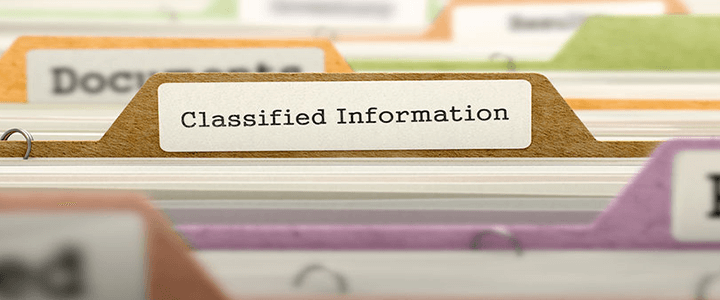A free country like ours progresses because we share more information with one another than any country on earth. We create ideas that we share to generate the visions and creations of others for happier, healthier, and safer lives for ourselves and our children. We believe that information should be shared, and the public is better protected ‘armed with the power that knowledge gives,’ as James Madison, one of our Founding Fathers, said. Anyone responsible for cleared activities knows this. So, how can we properly balance the right of a free people to know what their government is doing, and the very safety of that information itself to protect our national security? A balancing act, indeed.
Anyone who holds a clearance also knows we are endlessly engaged in that balancing act between the public’s right to know and what we need to protect to keep our nation safe. Often this results in vast amounts of classified information that must be protected. Confronted with a massive amount of classified information, our cleared person must decide, What can I legally do with so much classified data? First, where is it? Is it kept online? Is it kept in a safe, or safes? Or, for that matter, is it retained in miles of safes in entire rooms? What if my classified information is a component of a project, or the entire project itself, and the very existence of that project that must be protected? Remember, while the company may have produced the information, the protection of it is directed by government classification guidelines.
As cleared readers have doubtless guessed, all of this protection requires money. You need first the cleared people, whose clearances cost an investment of thousands. You’ll need constant training of these people, and then you’ll need the equipment for them to produce their cleared work. That involves computers, retention systems, protected areas (such as Secured Compartmented Information Facilities (SCIFs), secured testing areas – even protected communications.
How do we decide what’s worth classifying?
It is important to know how to decide if something is important enough to protect by classification, even physical defense. Money talks, especially here. Of course, the post World War II rules about ‘effect on national security’ governs whether certain information can be released. If releasable, we need to know at what level of classification. But what about deciding whether something should be classified in the first place? If that’s not hard enough, how about when you are finished with something? What do you do to declassify it? One government agency, confronted with literally buildings of classified information from World War II, had to declassify it due to public pressure to learn about the war. Researchers were tired of coming up against decades-old classifications of, for example, aircraft bombing tactics. They called upon powerful congressmen and executive office administrators to do something. They responded. So miles of data created to protect ‘national security’ in the Second World War became available to answer another need of a free people: public historical, social, and political inquiry. After all, as Madison argued in the quotation touched on earlier contended, “A people who mean to be their own governors must arm themselves with the power which knowledge gives.”
The eternal battle between security and public information plays itself out whenever we go to classify, or declassify a document. Since the word ‘secret’ appears only one time in all of the Constitution, we’ve created a host of governing regulations to determine when, or if, some information or thing should be protected.
Classification and Declassification
First, remember that protections cost money. Original classifiers are guided by national security requirements which start at those levels of classification mentioned earlier. (Let’s pause here to remember that there are severe penalties for false classification, such as to protect wrongdoing.) Derivative classifiers must also consider whether their determination is valid, not only rely forever on the original classification to cover everything that follows. But what about declassifying? What guides us in either case?
Here are general considerations to review before placing secret stamps everywhere, or lining through them for public release. Let’s look at what we should ask before placing a classification stamp on anything. For instance, what is the declassification date on the document or event? Will this document remained classified forever? Really? Is it regulated by an Executive Order, or does it automatically get declassified when the project is over? Few know that in the past, a person could stamp, “Entire document classified.” That is thankfully no longer the case, and now paragraph markings are mandatory. Is there an appeal process that applies to this project, and if so, what is it? Even better, is there an oversight procedure to protect against overzealous (or lazy) classifiers to keep them from over or under classifying something? Is there, after all, a scheduled review for declassification or release? What are the formal mandatory review procedures?
If your company would rather not guard a secret component of a major missile program forever, know who, how, and when to have done with it. Same with documents. Oh, and know what to do to get rid of them from a computer, too. Don’t just hit ‘delete’ and clap your hands for a job well done.
Know who can advise you from your government contacts. They stand ready to help. Hire professionals to do this kind of work if you don’t have the expertise in house.What we care enough to classify, we must care enough to carefully declassify when the situation warrants.



